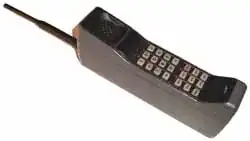Remember that carriers are selling bandwidth, that’s it. Actually, they are overselling it, exactly like cable modems (but that's another story). If everyone in the coverage area of a cell tower tried to make a call at once, most of them would be unhappy.
The carriers paid a boat load of money for their chunk of spectrum and their overriding goal is to maximize their use of their chunk. Since there is (in theory) competition, there is a focus on quality of service since all the plans seem strangely similar in price.
Towers are expensive, but as the others have mentioned, phones only have to transmit a few km at most to hit a tower and often less than 1 km in urban areas.
Cell phones use a heavily optimized spread spectrum digital mode that is focused on short haul weak signal work. Towers have a limit of 100W (omnidirectional) or 500W directional, however, in practice towers typically transmit in the range of 25-60 watts.
In most countries cell phones are limited to 2W PEP, however most modern cell phones have a peak power of about 300mW and are typically transmitting in the 100mW range.
In order to limit interference with adjacent sites, cell towers actively manage the transmit power both in the tower and on phones throughout a call, even between words. In this case, what’s good for the carrier is good for the consumer since their drive to minimize power use means the phone’s battery lasts that much longer.
Contrast this with HTs
First batteries – Economy of scale has let cell phone manufacturers use custom LiPo batteries for years where these are only now becoming standard on HTs. Lots of the HTs out there have NiMH or even NiCd batteries still; a lower energy density.
Power – If a cell phone were to transmit 5W PEP FM, it would run dead just as fast as an HT with the same size battery. The energy efficiency is in the mode used and the fact that the required range is very low.
Role – Cell phones are designed to work only where people typically go: on the roads, shopping areas, cities and the infrastructure is sited to handle that. However, people that use HT’s typically spend a good part of their time in places people don’t go as much: parks, woods, mountains. So you’d need more range even if you were using the same mode.
As Phil mentioned, we’ll see advanced features in add on modes first like D-STAR (Icom) and C4FM FDMA (Yaesu). Of course, these guys are looking to sell radios, to there’s no incentive (yet) to agree on a protocol. Initially this will just allow add on services. It would take something major before people start replacing repeaters with ones that actively manage power. Heck, it’s all some clubs can do to keep a basic 2m repeater up 24/7/365 on volunteer labor.
